-
 Bitcoin
Bitcoin $104,092.7082
-3.90% -
 Ethereum
Ethereum $2,500.1510
-9.45% -
 Tether USDt
Tether USDt $1.0003
0.02% -
 XRP
XRP $2.1161
-5.92% -
 BNB
BNB $644.7652
-3.34% -
 Solana
Solana $143.3632
-10.62% -
 USDC
USDC $0.9995
-0.03% -
 Dogecoin
Dogecoin $0.1728
-9.80% -
 TRON
TRON $0.2700
-2.70% -
 Cardano
Cardano $0.6282
-9.47% -
 Hyperliquid
Hyperliquid $38.5896
-7.04% -
 Sui
Sui $2.9976
-10.50% -
 Chainlink
Chainlink $13.0865
-10.97% -
 UNUS SED LEO
UNUS SED LEO $8.8697
1.35% -
 Stellar
Stellar $0.2563
-7.44% -
 Bitcoin Cash
Bitcoin Cash $401.8213
-6.21% -
 Avalanche
Avalanche $18.8844
-11.63% -
 Toncoin
Toncoin $2.9457
-8.46% -
 Shiba Inu
Shiba Inu $0.0...01163
-9.64% -
 Hedera
Hedera $0.1538
-10.65% -
 Litecoin
Litecoin $82.4785
-9.46% -
 Polkadot
Polkadot $3.7430
-9.96% -
 Ethena USDe
Ethena USDe $1.0004
-0.01% -
 Monero
Monero $306.8529
-6.55% -
 Dai
Dai $0.9998
0.01% -
 Bitget Token
Bitget Token $4.4842
-5.28% -
 Pepe
Pepe $0.0...01069
-13.19% -
 Uniswap
Uniswap $7.0207
-13.47% -
 Pi
Pi $0.5498
-13.03% -
 Aave
Aave $268.2967
-9.88%
Jumping high and opening low: a typical feature of short-term peaking?
A "jumping high and opening low" pattern in crypto signals a potential bearish reversal, often caused by initial hype followed by profit-taking or whale manipulation.
Jun 12, 2025 at 08:43 am
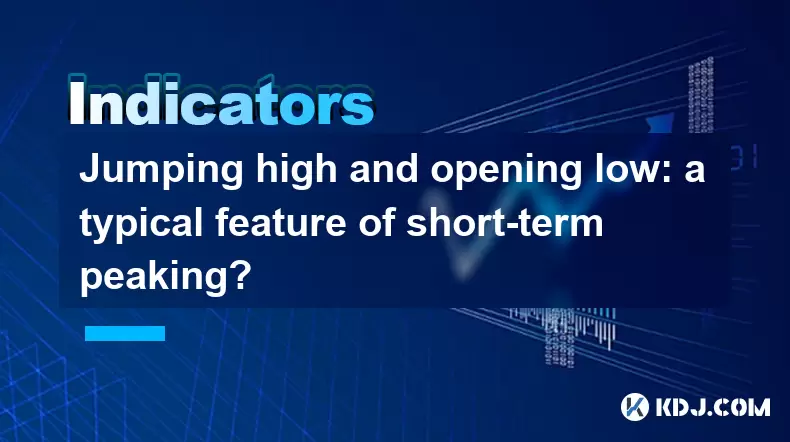
Understanding the Concept of Jumping High and Opening Low
In cryptocurrency trading, "jumping high and opening low" refers to a price pattern where an asset opens significantly higher than its previous closing price but then sharply declines, eventually closing below the previous close. This phenomenon is often observed in volatile markets like crypto, where rapid price swings are common. Traders closely monitor this pattern as it may indicate short-term peaking or reversal signals.
This behavior typically reflects a sudden surge in buying pressure followed by aggressive selling. The initial jump is usually fueled by positive news or market hype, while the subsequent drop suggests profit-taking or bearish sentiment taking over.
What Causes Jumping High and Opening Low Patterns?
Several factors contribute to this kind of price movement:
- Market Sentiment Shifts: A strong bullish move may trigger panic buying, which is quickly followed by large sell orders from traders locking in profits.
- Whale Activity: Large holders (whales) may manipulate the price by pushing it up before dumping their holdings, causing the price to plummet.
- Liquidity Gaps: Especially during weekends or off-hours, gaps can form due to uneven liquidity, leading to exaggerated price movements when the market resumes.
- Algorithmic Trading: Automated systems may react to specific triggers, amplifying volatility and creating sharp reversals.
These elements collectively create the jumping high and opening low scenario, which is frequently interpreted as a sign of weakening momentum.
How Does This Pattern Signal Short-Term Peaking?
Traders analyze candlestick patterns to detect potential trend reversals. A jumping high and opening low candlestick formation often serves as a bearish reversal signal in technical analysis. Here’s why:
- Bullish Exhaustion: The initial upward spike shows strong buying interest, but the inability to maintain that level indicates bulls are losing control.
- Bearish Takeover: As the price drops below the previous close, bears gain dominance, signaling a shift in power.
- Volume Confirmation: If the decline is accompanied by high volume, it reinforces the likelihood of a reversal or correction phase.
Many experienced traders view this pattern as a warning sign that the current rally might be ending temporarily, prompting them to consider exiting long positions or initiating short trades.
Identifying Jumping High and Opening Low in Real Charts
To recognize this pattern on a chart, follow these steps:
- Look for a candle that opens significantly above the previous candle’s close.
- Observe whether the price rises sharply during the session — this is the “jumping high” phase.
- Check if the price then falls dramatically, closing below the previous candle’s close — this is the “opening low” part.
- Confirm with volume indicators; increased volume during the drop supports the reversal hypothesis.
- Use tools like moving averages or RSI to validate the weakening momentum.
This candlestick structure resembles a shooting star or an inverted hammer, both of which are known reversal indicators in technical analysis.
Trading Strategies Around Jumping High and Opening Low
When encountering this pattern, traders may adopt different strategies depending on their risk appetite and time horizon:
- Short Entry at Close: Some traders enter short positions once the candle closes below the prior close, anticipating further downside.
- Sell Long Positions: Investors who bought the rally may use this as an opportunity to exit.
- Wait for Confirmation: Others prefer to wait for the next candle to confirm the reversal before acting.
- Use Stop-Loss Orders: Since false signals are possible, placing stop-losses above the high of the jumping candle helps manage risk.
- Combine with Other Indicators: Using support/resistance levels or Fibonacci retracements can improve accuracy.
Each strategy requires careful monitoring of volume and market context to avoid premature entries or exits.
Frequently Asked Questions
Q: Can jumping high and opening low occur in any time frame?
Yes, this pattern can appear across various time frames — from 1-hour charts to daily or weekly ones. However, its reliability increases on higher time frames such as 4-hour or daily charts due to stronger confirmation signals.
Q: Is this pattern always a sign of reversal?
No, not necessarily. While it often signals a bearish reversal, it can sometimes act as a continuation pattern in strong downtrends. Context matters greatly, including overall trend direction, key support/resistance levels, and volume.
Q: How does it differ from a gap up followed by a red candle?
The concept is similar, but the difference lies in the closing level. In a typical gap-up scenario, the candle may still close above the previous close. In jumping high and opening low, the close must be below the prior candle’s close, making it a stronger reversal signal.
Q: What role does social media play in triggering this pattern?
Social media can amplify volatility. Positive buzz around a coin may cause a sharp jump in price, especially in altcoins. Once the hype fades, or negative opinions surface, the price can fall rapidly, leading to the classic jumping high and opening low structure.
Disclaimer:info@kdj.com
The information provided is not trading advice. kdj.com does not assume any responsibility for any investments made based on the information provided in this article. Cryptocurrencies are highly volatile and it is highly recommended that you invest with caution after thorough research!
If you believe that the content used on this website infringes your copyright, please contact us immediately (info@kdj.com) and we will delete it promptly.
- HashFly, a Pioneering Force in the Cloud Mining Industry, Solidifies Its Position as the Most Trusted Platform of 2025
- 2025-06-13 11:00:25
- Nimanode Raises Over 15% of its Soft Cap in Token Presale
- 2025-06-13 11:00:25
- US President Donald Trump released a prerecorded message for attendees of Coinbase's State of Crypto Summit as Congress considers legislation to regulate payment stablecoins and establish a digital asset market structure framework.
- 2025-06-13 10:55:12
- Xpfinance (XPF) Token Presale Surpasses 40% of Its Soft Cap Allocation
- 2025-06-13 10:55:12
- Official Trump (TRUMP) Is Closing in on VeChain (VET) in Market Cap – and Fast
- 2025-06-13 10:50:11
- The race for the next big crypto coin is on. SUI is flashing bullish signals with a possible 2x breakout.
- 2025-06-13 10:50:11
Related knowledge
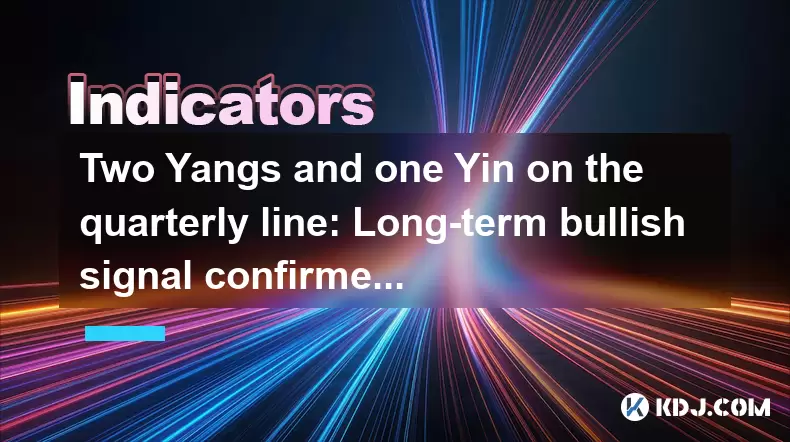
Two Yangs and one Yin on the quarterly line: Long-term bullish signal confirmed?
Jun 12,2025 at 07:00am
Understanding the 'Two Yangs and One Yin' Candlestick PatternIn technical analysis, candlestick patterns play a pivotal role in identifying potential market reversals or continuations. The 'Two Yangs and One Yin' pattern is one such formation that traders often observe on longer timeframes like the quarterly chart. This pattern consists of two bullish (...
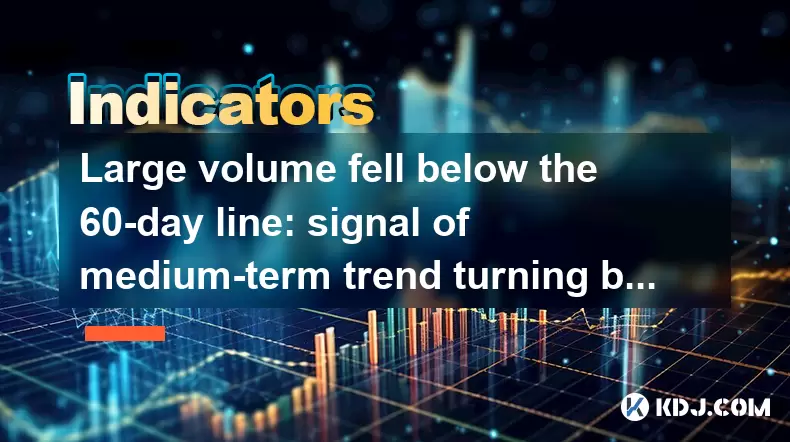
Large volume fell below the 60-day line: signal of medium-term trend turning bearish?
Jun 13,2025 at 03:42am
Understanding the 60-Day Moving Average in CryptocurrencyIn cryptocurrency trading, technical analysis plays a crucial role in predicting price movements. One of the most commonly used indicators is the 60-day moving average (MA), which smooths out price data over the last 60 days to provide traders with insights into the medium-term trend. When large v...
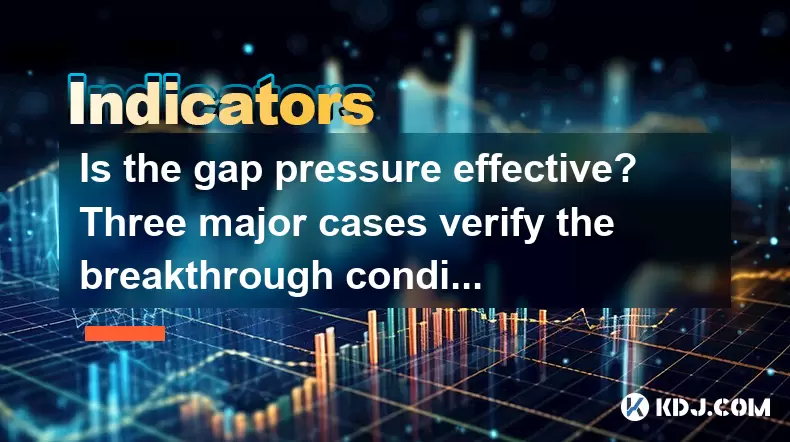
Is the gap pressure effective? Three major cases verify the breakthrough conditions
Jun 13,2025 at 04:35am
Understanding the Gap Pressure in Cryptocurrency TradingIn cryptocurrency trading, gap pressure refers to a technical analysis concept where price gaps form due to sudden market movements. These gaps often occur between the closing price of one trading session and the opening price of the next. Traders pay close attention to these gaps because they can ...
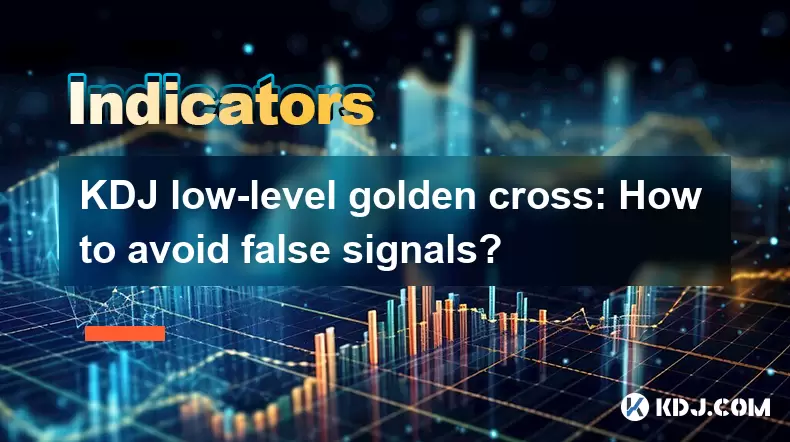
KDJ low-level golden cross: How to avoid false signals?
Jun 12,2025 at 08:21am
Understanding the KDJ IndicatorThe KDJ indicator, also known as the stochastic oscillator, is a momentum-based technical analysis tool widely used in cryptocurrency trading. It consists of three lines: the %K line (fast stochastic), the %D line (slow stochastic), and the %J line (divergence value). These lines oscillate between 0 and 100, helping trader...

Bottom-up volume stagnation: Is it accumulation or heavy selling pressure?
Jun 12,2025 at 01:42pm
What Is Bottom-Up Volume Stagnation?Bottom-up volume stagnation refers to a specific pattern observed in cryptocurrency trading charts where the price of an asset moves sideways or slightly downward, and trading volume remains consistently low over an extended period. This phenomenon is often seen after a sharp price drop or during a prolonged bear mark...
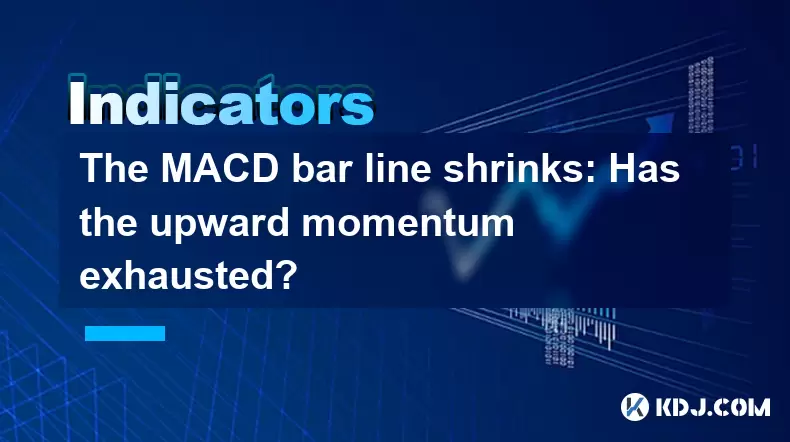
The MACD bar line shrinks: Has the upward momentum exhausted?
Jun 12,2025 at 12:49am
Understanding the MACD Bar LineThe Moving Average Convergence Divergence (MACD) is a widely used technical indicator in cryptocurrency trading. It consists of three main components: the MACD line, the signal line, and the MACD histogram (also known as the bar line). The MACD bar line represents the difference between the MACD line and the signal line. W...

Two Yangs and one Yin on the quarterly line: Long-term bullish signal confirmed?
Jun 12,2025 at 07:00am
Understanding the 'Two Yangs and One Yin' Candlestick PatternIn technical analysis, candlestick patterns play a pivotal role in identifying potential market reversals or continuations. The 'Two Yangs and One Yin' pattern is one such formation that traders often observe on longer timeframes like the quarterly chart. This pattern consists of two bullish (...

Large volume fell below the 60-day line: signal of medium-term trend turning bearish?
Jun 13,2025 at 03:42am
Understanding the 60-Day Moving Average in CryptocurrencyIn cryptocurrency trading, technical analysis plays a crucial role in predicting price movements. One of the most commonly used indicators is the 60-day moving average (MA), which smooths out price data over the last 60 days to provide traders with insights into the medium-term trend. When large v...

Is the gap pressure effective? Three major cases verify the breakthrough conditions
Jun 13,2025 at 04:35am
Understanding the Gap Pressure in Cryptocurrency TradingIn cryptocurrency trading, gap pressure refers to a technical analysis concept where price gaps form due to sudden market movements. These gaps often occur between the closing price of one trading session and the opening price of the next. Traders pay close attention to these gaps because they can ...

KDJ low-level golden cross: How to avoid false signals?
Jun 12,2025 at 08:21am
Understanding the KDJ IndicatorThe KDJ indicator, also known as the stochastic oscillator, is a momentum-based technical analysis tool widely used in cryptocurrency trading. It consists of three lines: the %K line (fast stochastic), the %D line (slow stochastic), and the %J line (divergence value). These lines oscillate between 0 and 100, helping trader...

Bottom-up volume stagnation: Is it accumulation or heavy selling pressure?
Jun 12,2025 at 01:42pm
What Is Bottom-Up Volume Stagnation?Bottom-up volume stagnation refers to a specific pattern observed in cryptocurrency trading charts where the price of an asset moves sideways or slightly downward, and trading volume remains consistently low over an extended period. This phenomenon is often seen after a sharp price drop or during a prolonged bear mark...

The MACD bar line shrinks: Has the upward momentum exhausted?
Jun 12,2025 at 12:49am
Understanding the MACD Bar LineThe Moving Average Convergence Divergence (MACD) is a widely used technical indicator in cryptocurrency trading. It consists of three main components: the MACD line, the signal line, and the MACD histogram (also known as the bar line). The MACD bar line represents the difference between the MACD line and the signal line. W...
See all articles

























































































